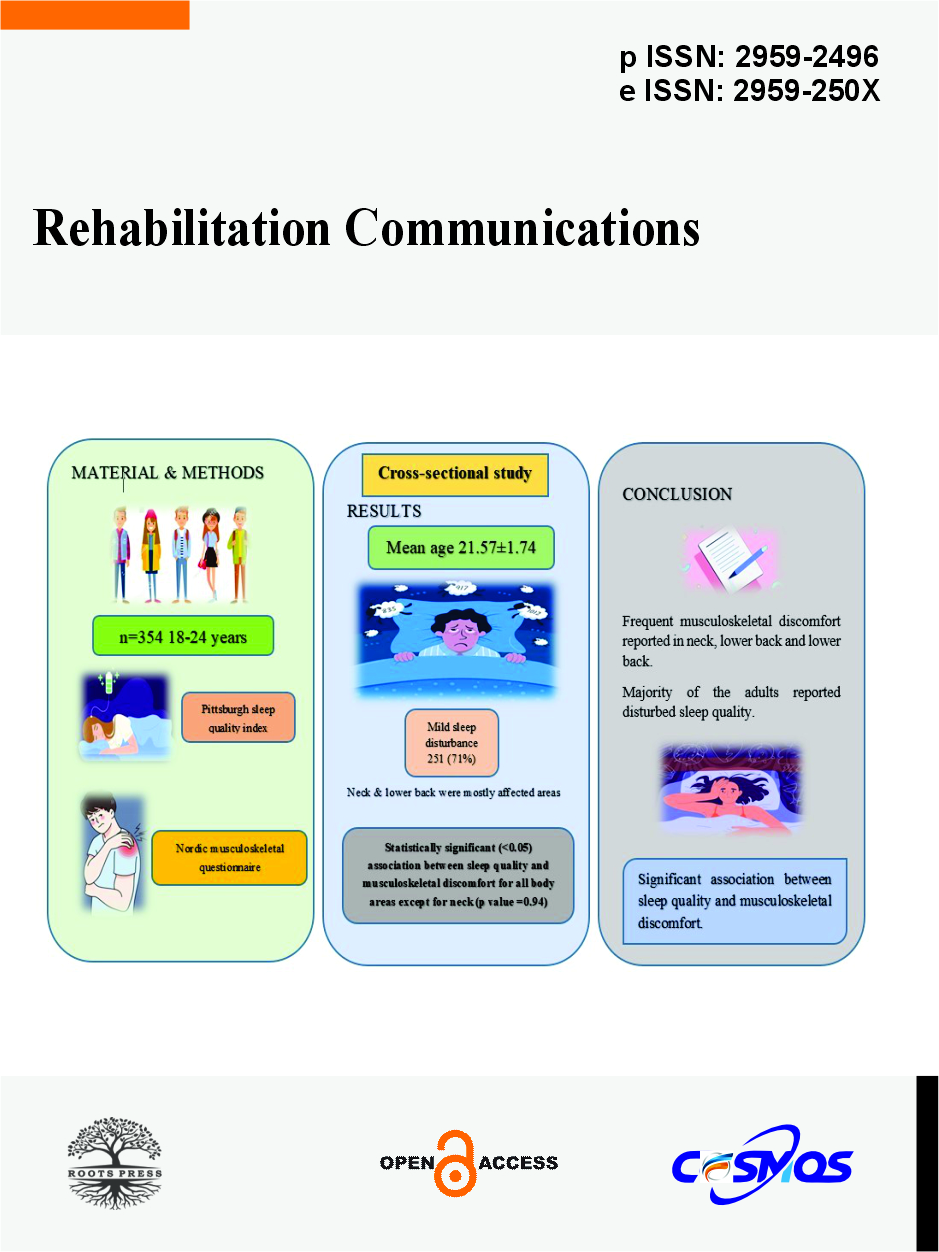Occupational Stress and Its Association with Musculoskeletal Disorders in University Teachers during COVID-19 Pandemic
DOI:
https://doi.org/10.55627/rehab.003.001.0558Keywords:
Occupational stress, university teachers, teacher stress inventory, COVID-19, e-learning, musculoskeletal disorders, Nordic musculoskeletal questionnaireAbstract
The Coronavirus disease (COVID-19) was first observed near the end of 2019, and soon after it became a turning point for the world. Almost all the academic institutes remained closed. This led to the adoption of a ‘hybrid teaching style’ and work from home became the modus operandi for the teachers during the pandemic. The COVID-19 pandemic compounded occupational stress, which is why teachers’ mental and physical health suffered tremendously, giving rise to anxiousness, pressure, headaches, musculoskeletal complications, and bodily exhaustion. The objective of this study was to determine the frequency of occupational stress and its association with musculoskeletal disorders (MSDs) in university teachers during the COVID-19 pandemic. This cross-sectional study was conducted from August 2021 to February 2022, within 6 months duration, after the approval of IRB & EC of Riphah International University, Islamabad. Data was taken from three cities in Pakistan (Rawalpindi, Islamabad, and Bahawalpur). It included 347 full-time teachers aged 25 to 59 from 7 government and private universities. The study utilized the Teachers Stress Inventory (TSI) and Nordic Musculoskeletal Questionnaire (NMQ) to assess stress frequency and musculoskeletal pain, respectively. The mean age of participants was 33 ± 6 years. Out of 347, 49.5% of teachers were from government universities and 50.4% were from private universities. The results revealed that the frequency of stress levels was 119 ± 27.2 in government teachers and 109 ± 18.3 in private teachers. Among government university teachers, 60.4% reported musculoskeletal discomfort, while only 32.8% of the participants from private universities reported discomfort. This study described the weak association (r = 0.08) and non-significant relationship (p>0.05) between occupational stress and musculoskeletal discomfort. The study concludes that mild stress levels were found in university teachers during the COVID-19 pandemic. There was a weak correlation between stress and musculoskeletal disorders.
Downloads
Published
Issue
Section
License
Copyright (c) 2024 Aasiya Pashtana, Amina Saeed, Asma Naseer, Laraib Anum, Misbah Ghous

This work is licensed under a Creative Commons Attribution 4.0 International License.








